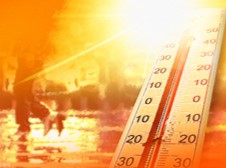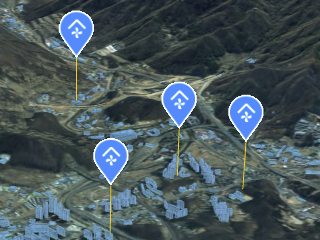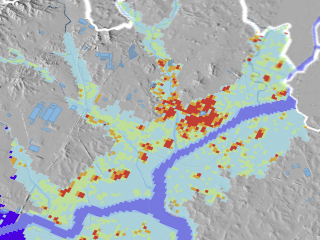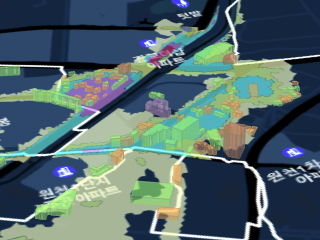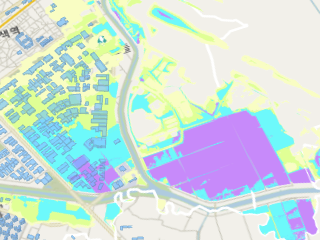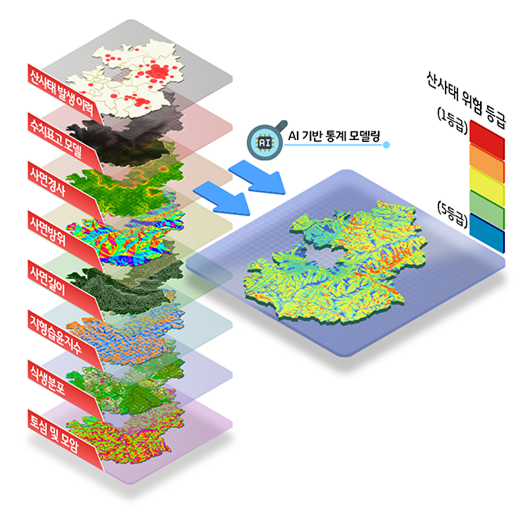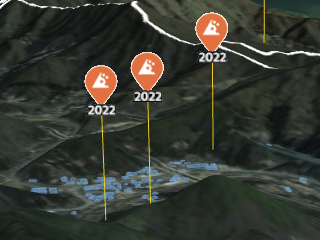
Climate Risk Overview
The climate crisis has begun — adaptation solutions reflecting the characteristics of Gyeonggi-do.
To minimize the real damage caused by the climate crisis, Gyeonggi-do requires its own adaptation strategy that reflects its unique topography, climate, urban structure, and demographic characteristics. The platform provides comprehensive information, including thermal comfort evaluation through 3D simulations, flood risk analysis based on actual disaster data, AI-based landslide risk ratings, and profiles of vulnerable populations by age, health, and income. This information forms the foundation for effective adaptation strategies and supports scientific decision-making.
Climate Change Current Status in Gyeonggi-do
In 2024, for the first time in Korea Meteorological Administration records, the national annual average temperature exceeded 14°C. In 2023, Gyeonggi-do recorded the coldest winter in the past five years. According to the Meteorological Data Open Portal, Gyeonggi-do’s average temperature has also been rising annually.
- Automated Synoptic Observing System (ASOS) is an automated system that measures various weather elements such as temperature, pressure, wind, humidity, precipitation, and solar radiation with high precision. Installed at major observation sites nationwide, it serves as the standard for national weather observation. Data collected simultaneously is used for forecasts, climate statistics, and climate change analysis.
- Major greenhouse gases such as CO₂ and CH₄ are measured in real time at monitoring stations in Gimpo and Pyeongtaek, enabling close observation of climate change trends.
Temperature
Rainfall
이산화탄소 농도
Future Climate Change Scenarios for Gyeonggi-do
Climate change scenarios (SSP-RCP) combine socioeconomic pathways—such as population, economy, and energy—with greenhouse gas concentration pathways to project future climate conditions. Based on these, Global Climate Models (GCMs) scientifically simulate changes in temperature, precipitation, and other factors for 2050 and 2100.
It provides future climate information by incorporating the impacts of anthropogenic factors, such as greenhouse gases and aerosols. This information can be used by Gyeonggi-do to anticipate and minimize the potential damages from climate change.
SSP (Shared Socioeconomic Pathways) Scenario
The SSP scenario, used in the IPCC 6th Assessment Report (2021), is a framework developed to explain the socioeconomic context of climate change based on changes in social, economic, educational, and technological factors. SSP is structured to comprehensively explore how climate change interacts with society, economy, and technological development. Five representative pathways (SSP1–SSP5) are presented. Combined with the RCP scenarios, SSP is used to analyze diverse climate change scenarios, contributing to a detailed understanding of the causes and effects of climate change.
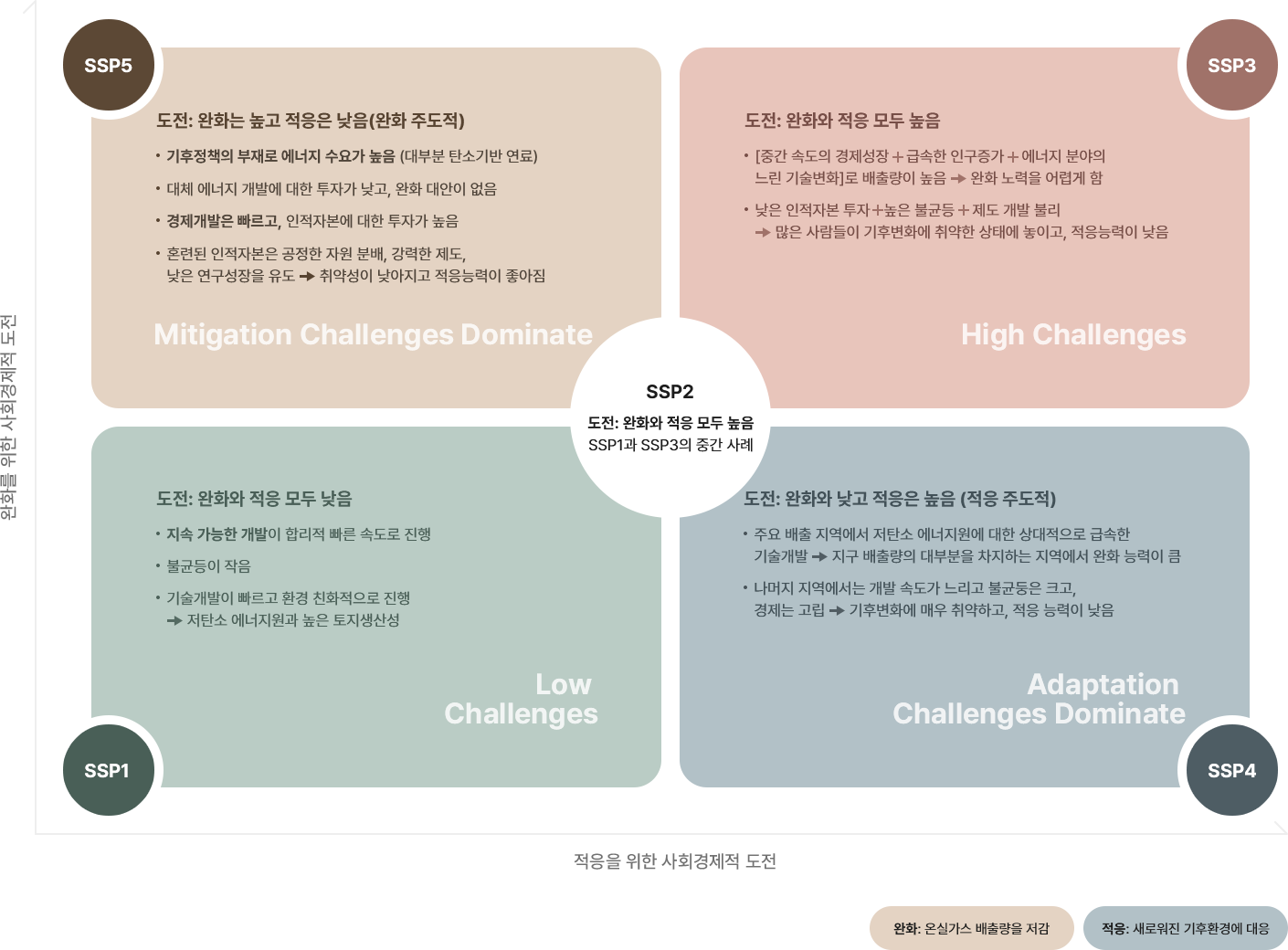

1) RCP (Representative Concentration Pathway) Scenario
The RCP scenario, used in the IPCC 5th Assessment Report (2013), is a set of representative greenhouse gas concentration pathways established to predict future climate change. RCP presents multiple pathways based on the radiative forcing level (W/m²) up to 2100, with RCP2.6, RCP4.5, RCP6.0, and RCP8.5 as representative examples. These scenarios are used to scientifically analyze climate responses to changes in greenhouse gas concentrations.

SSP-RCP scenario analysis case
Scenario Analysis Conditions
지속가능한 경제성장을 이룰것으로 가정하는 경우
Ranking by Administrative Districts in Gyeonggi-do
Assumes environmentally sustainable economic growth with the development of renewable energy technology and minimal use of fossil fuels (low-carbon scenario)
Climate Crisis Status in Gyeonggi-do
‘Heavy snow exceeding 40 cm’, ‘Emergency response Level 3 for the first time in 12 years’, ‘Yeoju, Gyeonggi-do 40°C’. Summer and winter in Gyeonggi-do are breaking records daily. Representative climate crisis phenomena due to extreme climate change include heavy rain, heat waves, and landslides.
Heat Wave
Recently, the number of heat-related illnesses and casualties caused by heat waves has been increasing. Between 2011 and 2022, the average annual increase rate of heat-related illnesses in Gyeonggi-do was 3.5%, while the average annual increase rate over the past three years (2020–2022) was 24.9%, indicating a sharp rise in heat-related illnesses.
Extreme Rain
Damage from extreme rainfall was particularly severe in 1998, 2011, and 2022. In 1998, total damage reached 500 billion won, and in 2011, approximately 24,000 people were affected, indicating substantial loss of life. In 2022, large-scale extreme rainfall caused additional damage, totaling approximately 200 billion won.
Landslide
Most landslides in Gyeonggi-do occur during heavy rain periods from June to October, showing clear regional concentration rather than annual variation. From 2018 to 2024, landslides occurred at 1,628 sites, with recent intensive occurrences in Icheon-si, Yangpyeong-gun, and Anseong-si.
Heat Wave
Heat Wave Occurrence in Gyeonggi-do
(2020-2024)
0
DaysHeat-related Illness Patients in Gyeonggi-do
(2021-2023)
0
PersonsIncrease Rate of Heat-related Illnesses in Gyeonggi-do
(2021~2023)
0
%Heat-related Illness Mortality Rate in Rural Areas Compared to Urban Areas
(National Average) 0.9%)
0
%Highest Temperature in Gyeonggi-do(ASOS)
(2021-2025)
0
°CHeat Wave
A heat wave is defined as a period when the daily maximum perceived temperature is 33°C or higher for more than 2 consecutive days. A heat wave warning is issued when the daily maximum temperature reaches 35°C or higher. However, regional characteristics cause significant differences in perceived temperatures, and vulnerable groups such as the elderly, infants, low-income populations, and outdoor workers face higher risks.
Gyeonggi-do is experiencing a rapid increase in the frequency of heat waves due to climate change. From 2011 to 2022, the average annual increase rate of heat-related illnesses in Gyeonggi-do was 3.5%, about twice the national average (1.8%). Over the recent three years (2020–2022), the rate surged to 24.9%, significantly higher than the national average of 8.4%.
Our platform used UMEP software and the Universal Thermal Climate Index (UTCI) to precisely analyze actual thermal comfort across Gyeonggi-do. This map illustrates the actual thermal environment, considering humidity, wind speed, solar radiation, and other factors, rather than temperature alone.
Users can identify heat wave–vulnerable areas using the data and implement effective measures such as shade shelters and park greening. Citizens can understand their local thermal environment and prepare effectively for heat waves.
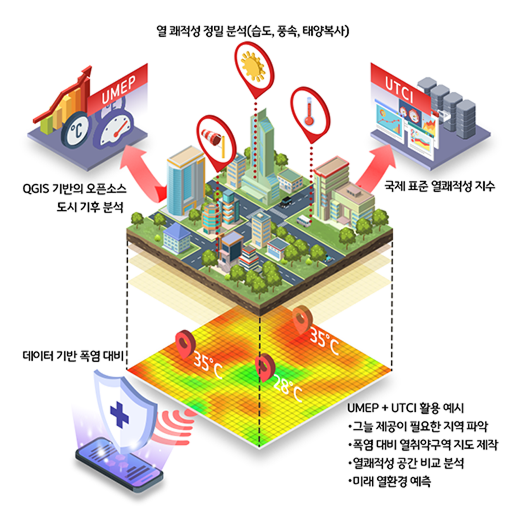
Thermal Comfort Evaluation Results
경기도 열쾌적성 평가 결과 통계
선택할 수 있는 데이터
Thermal Comfort Evaluation Results
Heat Wave 데이터
| 선택 문구 |
|---|
| 선택된 시군/읍면동 또는 데이터가 없습니다. 시군/읍면동 또는 데이터를 선택하여 주십시오. |
Extreme Rainfall
Increase in Precipitation in Gyeonggi-do
(2014-2024)
0
mmProperty Damage
(2019-2023)
0
KRW 100 MillionNumber of Affected People
(2019-2023)
0
PersonsNumber of Casualties
(2019-2023)
22
Persons (13% of Nationwide)Number of Damaged Buildings
(2019-2023)
0
동 (20% of Nationwide)Extreme Rainfall
Extreme rainfall in Gyeonggi-do is increasing continuously due to climate change. In 2023 alone, Gyeonggi-do recorded 193 heavy rain warnings, the highest on record, and instances of hourly rainfall exceeding 200 mm are becoming more frequent.
Flood risk does not affect all areas equally. From 2007 to 2022, flood damage in Gyeonggi-do totaled KRW 874 billion, the highest nationwide, with regional differences exceeding 20-fold. Areas with high concentrations of elderly residents and low-lying semi-basement housing are at greater risk.
To prepare for extreme rainfall, eight years of data (2016–2023) were systematically analyzed, and flood risk was assessed across Gyeonggi-do at city/county and 100m×100m grid levels. Using four criteria—risk factors, exposure, vulnerability, and response capacity—11 detailed indicators, including rainfall patterns, building distribution, vulnerable population, and disaster prevention facilities, were analyzed to scientifically derive the actual flood risk level for each area. Genetic algorithms and Euclidean-based optimization weights were applied to minimize errors between actual damage and assessment results.
Flood Risk Index Maps are key tools for data-driven disaster prevention decision-making. Local governments can allocate limited budgets and manpower to the highest-risk areas, provide concentrated support for vulnerable populations, and develop customized evacuation plans. Additionally, it can serve as scientific evidence for long-term infrastructure planning, such as river maintenance and green infrastructure, significantly enhancing policy effectiveness.
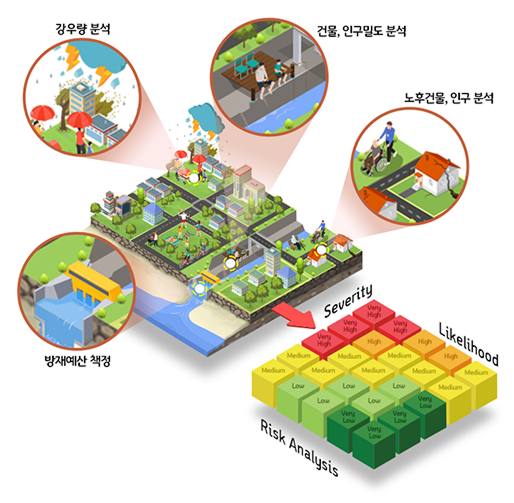
Extreme heavy rainfall risk ranking
경기도 홍수위험도 세부지표(2023년 기준)
선택할 수 있는 데이터
Extreme heavy rainfall risk level
Population vulnerable to extreme rainfall
경기도 극한호우 취약인구 통계
선택할 수 있는 데이터
Facilities vulnerable to extreme rainfall
홍수위험지수
Local Weather Information
Provides real-time, accurate local weather information and weather alerts.
기상청 500m 고해상도 기상정보를 활용하여 정밀한 기상정보를 제공합니다.
- 체감
- -˚
- 습도
- -%
- 풍향
- -m/s
기상특보
발령정보
통합대기환경지수 - (-)
Air Quality Information at Monitoring Stations
내 위치에서 가까운 측정소가 조회되면 차트가 표시됩니다.
More information is available from the Gyeonggi-do Air Quality Information Service.



